It was a pleasure to meet recently with Sven Hansen, the founder of The Resilience Institute, and to read his new book ‘Inside – Out – The Practice of Resilience‘. Sven’s definition of resilience is evidenced in the following diagram, which also frames the structure of his book, a very informative and evidence-based discussion about what I would call the essential biology (and some psychology) of resilience. It is a book that will challenge you to think constructively about how you lead your life. And it is full of very practical advice about how you can choose to substantially improve your physical, mental and emotional wellbeing and develop the ability to ‘bounce’ back from the impacts of life’s many challenges
According to Sven resilience, the ability to demonstrate bounce, courage, creativity and connection, is a learned capacity to create a desired performance outcome. By learning to align our mind (thinking), heart (emotions) and body we can develop the capacity to create a ‘resilient outcome’. As one way of framing this thinking he uses the idea of a ‘performance supply chain’ to show that the required outcome (resilience) can be enabled by developing a particular set of coherent mind-heart-body conditions, which we can use to frame our responses to challenging situations which occur at home, at work or at play.
This thinking reminds me of Otto Scharmer’s Theory U and the constructs of ‘Open Mind, Open Heart, Open Will’, which are proposed as necessary conditions to enable the emergence a different future. It seems to me that building resilience and the potential to ‘bounce back’ also requires the capacity to emerge a different future. (You can read some more about ‘presencing the future’ here) .
The primary body-mind focus of the book finally admits a spiritual dimension towards the end, almost as if this less-tangible notion sits uneasily within an evidence-based discussion and/or perhaps will be less resonant with a corporate sector audience. In the closing brief chapters of the book, awareness, presence and resonance emerge as important (‘beyond body, heart and mind’) components within the connections dimension of the model. I find this positioning and emphasis interesting because I think that an inside-out conversation about resilience should perhaps begin with what enables presence and resonance, and is discovered through awareness (or attention).
I am talking here about individual purpose, our highest intentions for our presence on this planet, which at its deepest level is the expression of our spiritual being. It is our sense of purpose that provides a positive frame for our life, that motivates us to be well and secures us when we are ‘unwell’; it is our sense of purpose that gives us the inner-strength to ‘bounce back’ against the odds.
This is not to diminish the part that rational thought (and evidence based research) plays in informing us what we should do, and when and why. But I suggest that what provides the long-term motivation to continually strive to be ‘the best that we can be’ is our true purpose in life (the real why?), a ‘knowing’ that is always true in the present.
Thus I would argue that knowing who we are, being able to answer the question – ‘why do we exist?’ is a fundamental precondition for the achievement of sustainable individual resilience. In my view a strong sense of purpose provides the lynchpin for any resilience model.(You can read more about the ‘the defining nature of purpose‘ here)
Just a thought….
Sven Hansen has been involved for many years in helping organisations to improve their functional performance through enhancing the resilience of their workforce; building the bounce, courage, creativity and connections of their leadership executives and managers. And while the positive impacts of this work can be very evident at an individual level, I think we may agree that all too often the real organisational benefits, the opportunities to enable these people to build more resilient organisations, are often blunted and constrained by blockages and shifts in organisational leadership, structures and cultures.
And so how could this be different? What would enable resilient individuals to flourish in an organisational community? What conditions or factors would create an organisational climate that enabled individual resilience to translate into organisational resilience – the ability of an organisation to demonstrate bounce, creativity, courage and connection?
I believe that the primary condition is the existence of a shared purpose, which enables a strong connection between the individual and the organisation. If we are anchored at our core to an individual purpose that is in synch with the organisation’s purpose then we have stablished a common raison d’etre that will sustain the organisational community through disruptive change. If you like, our personal ‘bounce anchor’ is aligned with the organisation’s ‘bounce anchor‘. We have a common rationale for sustaining our mutual wellbeing through thick and thin – our mutual ‘bounce-ability’ is energised and motivated.
The second condition, which relies on the first, is the existence of enabling leadership. This is a shared leadership style that is based on an ethic of selfless service to others – the idea that leadership is about helping other people to succeed – and where success means achieving a valuable outcome for all, in essence the manifestation of a common purpose. Imagine how this style of leadership could enable and support (release) individual resilience within an organisational community. (You can read more about ‘enabling leadership‘ here ).
The third condition is the existence of meaningful relationships. These are win-win relationships that build a connected and collaborative community, “relationships that find their meaning in a strong mutual interest or shared purpose..and encourage learning and collaborative engagement to co-create outcomes that generate equitable shared value for all participants’’ (The Congruence Framework). It is through these positive relationships that individuals find the courage and confidence to be themselves, to contribute through their successes and failures within their organisational communities. And it is within collaborative communities, which these relationships enable, that resilient individuals can release their real potential and make their best contribution.
The final condition is the existence of a culture of collaborative learning, which enables organisations to co-create their future together by harnessing the collective wisdom and knowhow of their stakeholder community. It is through collaborative learning, secured by a common purpose, that organisations can engage the individual bounce and creativity of their people. Collaborative learning enables and sustains the resilient individual. It provides a space where failure is seen as an opportunity for learning and where individual ideas are welcome. Collaborative learning values the individual and gives them space to be themselves.
It seems obvious to me that if we have an organisational community that shares a common purpose and is committed to helping each of its members to succeed (to manifest their shared purpose) then we have an organisational community where resilient individuals will flourish.
If have a community where collaboration – working together for mutual benefit – is the norm, and where trusted relationships underpin and enable a culture of collaborative learning, then we have an organisational culture that will embrace the ebb and flow of resilience.
And we also have what I would call a congruent organisation – an organisation distinguished by it shared purpose, enabling leadership, meaningful relationships and collaborative learning, and an organisation ready to release the potential of resilient individuals.
The Congruence Framework links resilience with sustainable wellbeing, reflecting a view that the resilience of the organisation is dependent on ‘the health, wealth and happiness of the organisational community…the degree to which the social, cultural, economic and environmental needs of the community are being met’ (The Congruence Framework).
There is a direct connection here with Sven Hansen’s Integrated Model of Resilience, which focuses on the importance of physical, emotional, intellectual and spiritual factors in building individual resilience, or what I might choose to call sustainable wellbeing. And there is some obvious alignment between the courage – bounce – connection – creativity factors, which are central to Sven Hansen’s model, and what I consider to the drivers of organisational resilience – confident – knowledgeable – resourceful – responsive – drivers that enable a positive organisational response to change
Congruent organisations are also resilient organisations. They are organisations that care about the ‘health wealth and happiness’ of their community and they enjoy a culture where the potential of resilient individuals can be released.
For more about congruent individuals, organisations and communities, please refer to my book The Congruence Framework
Books mentioned in this post include:

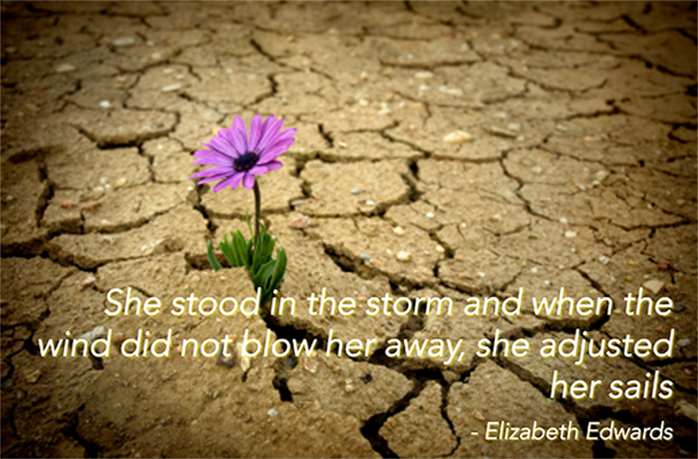
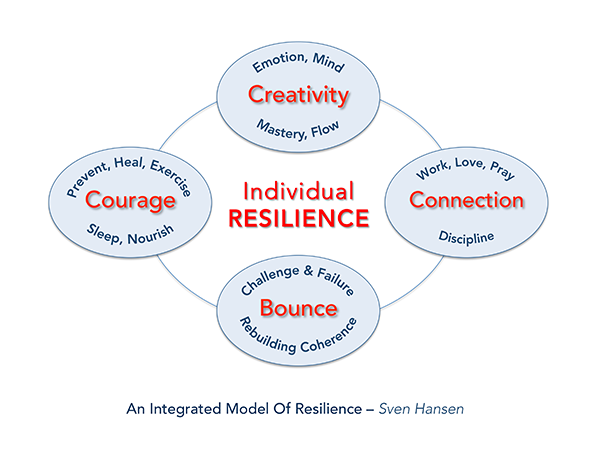
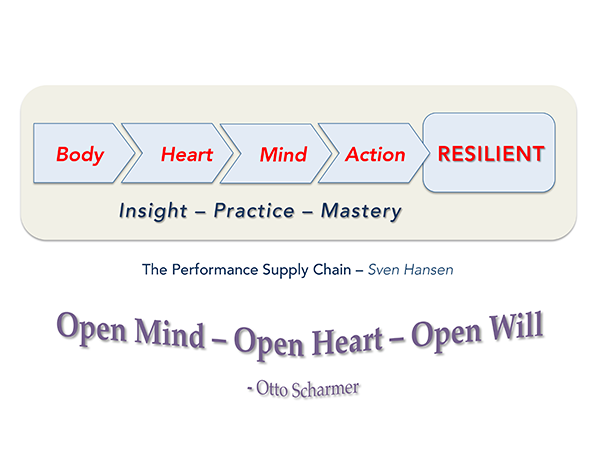
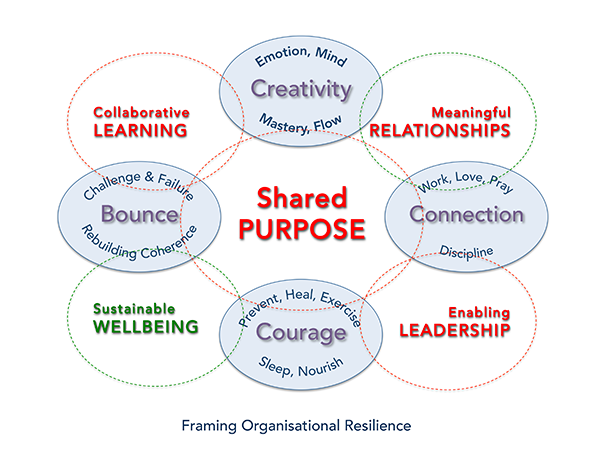
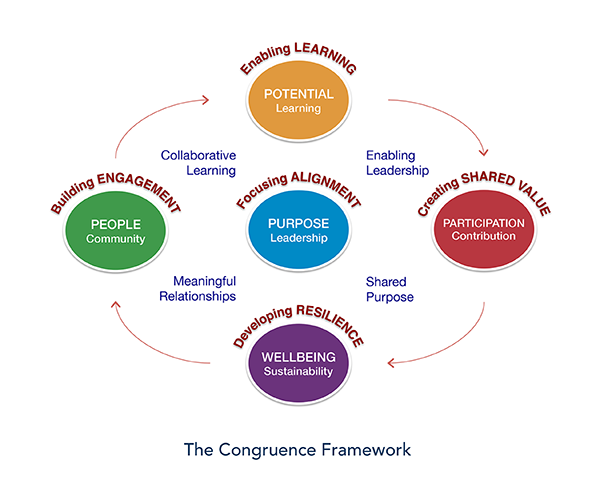
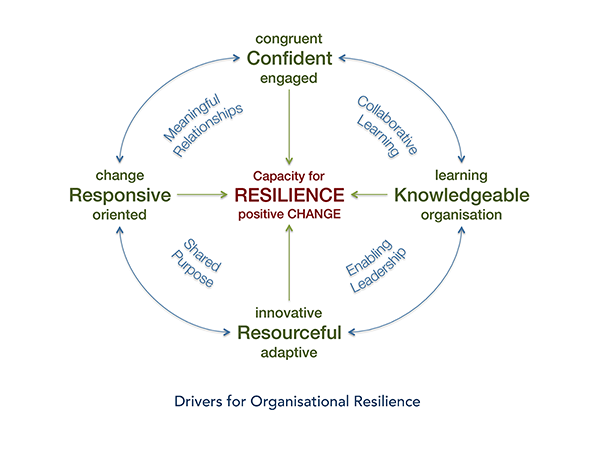
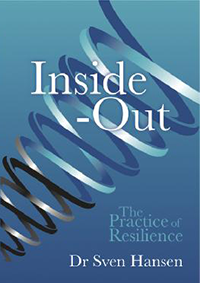
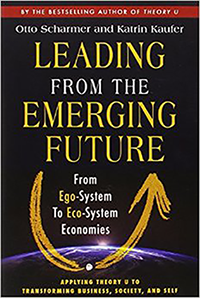
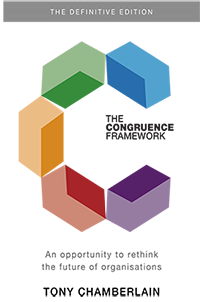
Leave A Comment